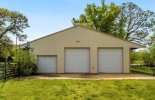- Joined
- Mar 11, 2008
- Professional Status
- Certified Residential Appraiser
- State
- Texas
I think you know well what I mean when I say accurate.Nothing in appraisal is "accurate". But depreciated cost at least supports the value estimate. Putting down nothing does not. PFA does not.





